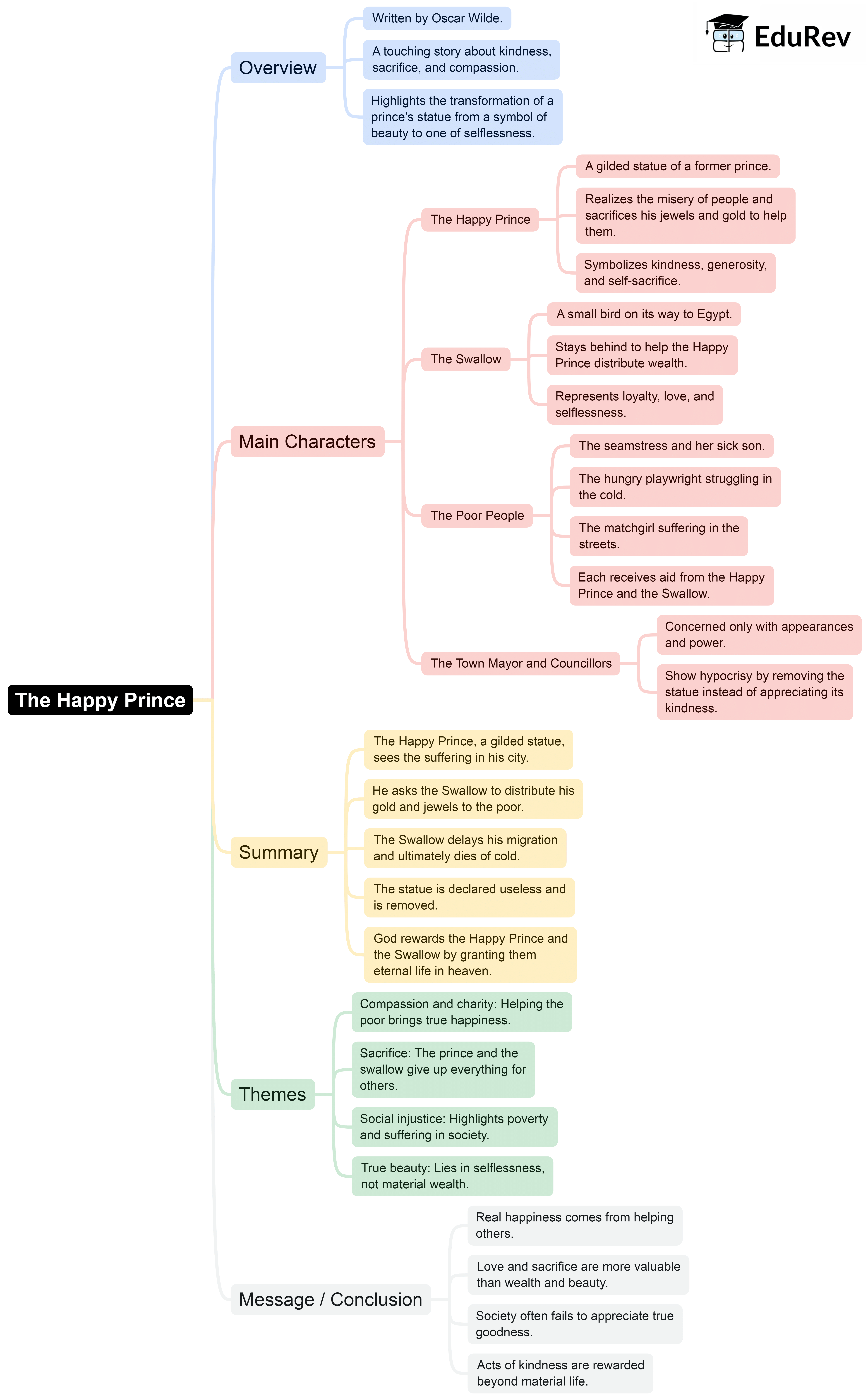Class 9 Exam > Class 9 Notes > English Class 9 > Mind Map: The Happy Prince
Mind Map: The Happy Prince | English Class 9 PDF Download

The document Mind Map: The Happy Prince | English Class 9 is a part of the Class 9 Course English Class 9.
All you need of Class 9 at this link: Class 9
|
180 videos|975 docs|124 tests
|
FAQs on Mind Map: The Happy Prince - English Class 9
| 1. What is the main theme of "The Happy Prince"? |  |
Ans. The main theme of "The Happy Prince" revolves around selflessness, compassion, and the disparity between wealth and poverty. Through the story of the statue of the Happy Prince and the little swallow, Oscar Wilde illustrates the significance of helping those in need and the true meaning of happiness, which is often found in acts of kindness rather than material wealth.
| 2. How do the characters of the Happy Prince and the swallow contribute to the story's message? |  |
Ans. The Happy Prince, once a living prince, represents the facade of beauty and wealth, which conceals the suffering of the poor. His transformation into a statue signifies his realization of the pain around him. The swallow, who initially seeks only comfort and warmth, learns the value of sacrifice and love as he helps the Prince distribute his jewels to the needy. Together, they embody the story's message that true happiness lies in altruism and caring for others.
| 3. What literary devices are used in "The Happy Prince" to enhance its narrative? |  |
Ans. Oscar Wilde employs various literary devices in "The Happy Prince," including symbolism, personification, and imagery. The statue of the Happy Prince symbolizes wealth and the hidden suffering of society, while the swallow is personified, showcasing emotions and growth. Vivid imagery paints a stark contrast between the opulence of the Prince and the misery of the impoverished, enhancing the emotional impact of the narrative.
| 4. What is the significance of the ending of "The Happy Prince"? |  |
Ans. The ending of "The Happy Prince" is significant as it highlights the ultimate sacrifice made by both the Happy Prince and the swallow. Their deaths signify a profound message about the value of selflessness. The townspeople's inability to understand the beauty of their sacrifice serves as a critique of societal values that prioritize materialism over compassion. The story concludes with a sense of hope, as their souls are taken to a better place, reinforcing the idea that love and kindness transcend earthly existence.
| 5. How does "The Happy Prince" reflect the social issues of its time? |  |
Ans. "The Happy Prince" reflects the social issues of its time by addressing the stark contrast between wealth and poverty, a prevalent theme in Victorian society. Wilde critiques the indifference of the wealthy towards the suffering of the poor and highlights the importance of social responsibility. Through the narrative, he encourages readers to recognize and address social injustices, making the story relevant not only in its time but also in contemporary discussions about empathy and social equity.
Related Searches
















